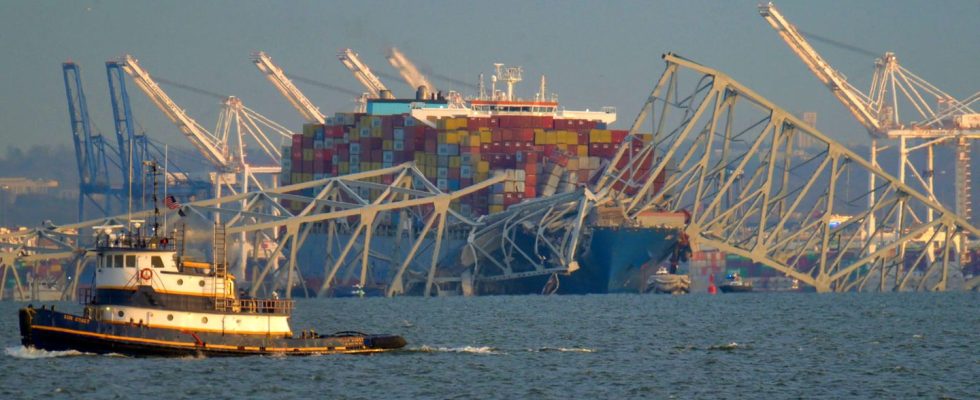Calamity in Baltimore
Could a bridge collapse also happen in Germany?
The Baltimore bridge collapse: Authorities still don’t know how many people died
© Karl Merton Ferron / Action Press
An accident occurred in the US city of Baltimore after a container ship rammed a pillar. There are some security measures in place in this country that are intended to prevent this case.
Several safety measures when building bridges over waterways make a serious collapse like the one in Baltimore, according to an expert Germany very unlikely. “For a bridge, the requirements for static safety are much higher than for a residential building,” said Prof. Josef Hegger from the Chair and Institute for Concrete Construction at RWTH Aachen to the German Press Agency on Tuesday. As a university lecturer, structural engineer and test engineer, he is an expert in bridge construction. Although such an accident can never be ruled out, the highest level of safety can be achieved by combining various design measures.
“The pillar must have a certain level of resilience so that it does not collapse with a slight impact,” explained the expert. The Federal Institute for Hydraulic Engineering, for example, uses fixed rules as to what impact load pillars must withstand depending on the shipping route and the size of the ships traveling there. In addition, there are also devices on waterways similar to guard rails that are intended to prevent an impact.
Bridge collapse: Germany builds pillars safely
In many cases, bridges are designed in such a way that ships cannot or only with difficulty collide with the pillars: “In Rhine bridges, the large pillars and pylons are often arranged at the edge of the river, so that the river opening is completely free. There are in the middle a pylon, then it is relatively massive and wedge-shaped and would, so to speak, distract a ship that drives against it,” said Hegger.
In the case of the bridges over the Kiel Canal, the pillars are usually arranged on the edge or outside the fairway, “so that the ships are more likely to run aground there before they hit the pillar with full force.” The designers of Hamburg’s Köhlbrand Bridge also relied on a similar principle: “Next to the large fairway, the pillars are on islands,” says Hegger. The ship – itself usually equipped with anti-collision devices – would rather run aground than crash into the piers.

